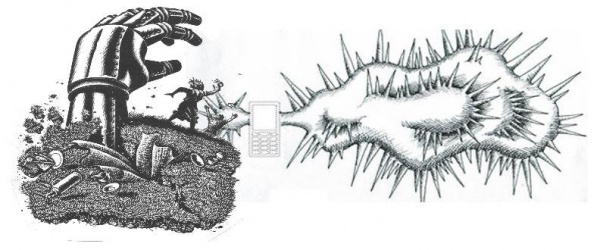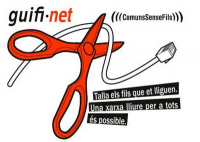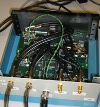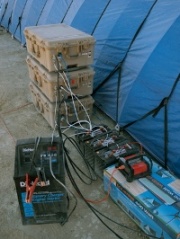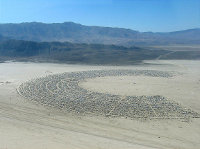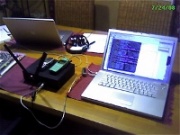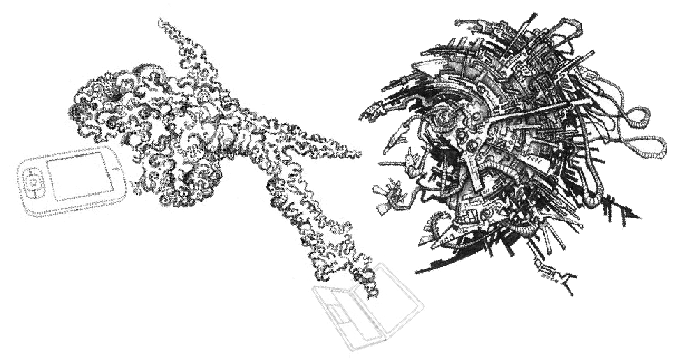Community run communication
(→ideas from barncamp) |
|||
| Line 166: | Line 166: | ||
* netsukuku | * netsukuku | ||
| − | * ronja diy laser | + | * [http://ronja.twibright.com/ ronja diy laser] |
* [http://ttfa.net/12volt ttfa.net/12volt] | * [http://ttfa.net/12volt ttfa.net/12volt] | ||
* fixit barngreaves | * fixit barngreaves | ||
| Line 176: | Line 176: | ||
* reddit | * reddit | ||
| + | * [https://www.johncahill.net/wiki/index.php/Skype_like_conferencing_System skype like conferencing system] also ZRTP and SRTP | ||
| + | * [http://www.appropedia.org appropedia] wiki for sustainablity and 'appropriate' technology | ||
| + | biochar as soil improver | ||
| + | open source ecology | ||
| + | plants for a future | ||
| + | RAM pump using water flow to pump a small amount of water | ||
| + | |||
| + | sox command line synthesiser - can write wav files | ||
| + | horn response - speaker enclosure design software. can use with abaca? audio abacus | ||
continue to [[430mhz data transfer]] | continue to [[430mhz data transfer]] | ||
Revision as of 17:25, 9 June 2013
If you choose not to rely on electronic communication, thats great. But for those of us who do, isn't it time we set up community run alternatives?
Contents |
Problems with existing communication networks
Gradually, the internet, which once seemed like a relatively free and user-controlled system – at least compared with totally centralised TV/radio broadcasting, becomes a controlled commercial space where people don't trust each other and we are constantly under the eyes of authorities and businesses - much like our city centres.
In feburary 2012 the non-profit website 'scroogle' which offered an alternative version of google (where searches were not recorded) was taken down after action against it taken by google. Then in march 2012 google put into practice their new privacy policy, making users search history available to other google owned sites. Of course other sites exist which provide secure web searches.
During the uprising in Egypt 2011 there was an internet blackout, making it clear that such a communication network is valuable for organising social change but sadly rests in the hands of companies willing to cooperate with the authorities. Since then the US has began to develop an 'internet kill switch'. See the US Open congress bill 'Protecting Cyberspace as a National Asset' and indymedia article Internet Freedom Fighters Build a Shadow Web
- la quadrature du net advocacy group for internet freedom
- Telephone portable, gadget de destruction massive zine (fr) pdf sur infokiosques.net
- Ne laissez pas les machines jouer avec les enfants zine (fr) pdf sur infokiosques.net
- quema tu movil (Es) zine pdf (burn your phone)
existing alternatives
storytelling
It is relevant here to question what is important to us in a communication network. Simply spending time with and talking to people around you is a very useful way to communicate. Any kind of centralisation or broadcasting of information (such as the use of a printing press) could be argued to be detrimental to the autonomy of individuals and communities. when we look at examples in 'nature' we can see that beautiful organised structures come about as the result of a large number of low level interactions.
amateur radio
'amateur' radio communication has existed for over a hundred years. It is both a local and an international network and has often been relied upon when other communications have broken down because of disasters such as floods. Data modulation systems such as PSK31 can allow text services similar to email or sms, which can operate over thousands of miles on HF. Using the amateur bands requires a lisence and an official 'callsign', which are relatively cheap and easy to get, but there are restrictions which may cause a problem. For example sending encrypted messages is forbidden, and the lisencing association stores personal details of its users and will cooperate with governments. Of course we could use similar systems illegally, but as an existing nework it has the advantage of having estabilished and well documented international standards, as well as infrastructure such as repeater stations.
- AMPRNet Amateur packet radio network, also known as hamnet, is the name given to computer networks connected by amateur radio links. Using TCP/IP (internet protocol) with packet radio has never been very popular because of bandwidth restrictions (VHF links are commonly limited to 9600 baud). Interestingly radio amateurs are allocated a chunk of IPv4 addresses (44.0.0.0/8).
- High Speed Multimedia Radio this article looks at using 802.11 wifi on different amateur bands.
darknets
networks which exist 'outside' the internet are gaining popularity. Many of them are comprised partly or entirely by internet 'tunnels' meaning they are not independent of interenet, but aim to create free and secure alternativesw within it.
- cjdns cjdns wikipedia
- GNUnet GNUnet is a framework for secure peer-to-peer networking that does not use any centralised or otherwise trusted services. GNUnet wikipedia
- Tor free software for online anonymity. There are certain services and websites configured to be only accessible to Tor users, which comprises a kind of darknet, including email, the hidden wiki, The silk road marketplace,
guifi.net
guifi.net is based mainly around catalunya/valencia, and with over 20,000 operational nodes, it is the biggest wireless network community in the world.
Each local guifi.net group organises between themselves financially - antennas can be bought be individual users, but often it is useful to put together some money for more expensive longer distance 'supernodes' and for times when nodes would need to be replaced, for example after being struck by lightening.
Many local guifi.net groups have successfully persuaded local government to share their internet connections, for example from libraries or offices, by allowing the group to install an antenna at the site linking it to the guifi network.
Guifi.net is backed by a 'foundation' officially registered as an operator with the Spanish Telecommunications Market Commision. Anyone (as long as they abide by guifi.net's code of practice) can use the name, and take advantage of being recogised as a foundation. For example, the inhabitants of two towns might organise together to lay fibre between the towns, and use guifi.net's foundation status to get permission from local governement.
They also have a good advocat and rely on european law to settle disputes about the legality of the project.
They use a private address space 10.xxx, ips are allocated by their website. and there are dns servers to resolve these local ips. The network is primarily used for providing interenet access, but off-internet services (ftp, etc) also exist and are quite popular.
Many guifi.net groups use mikrotik routers, and some use ubiquity.
freifunk
Freifunk is an international Project for free wireless networks and frequencies (Open Spectrum). Originating in germany, there are many community wireless mesh networks operating under the name 'freifunk'. The freifunk firmware is a modified version of OpenWRT designed for mesh networks.
- freifunk.net
- freifunk wiki in english
- OLSR an adhoc wireless mesh routing daemon
tetaneutral
- tetaneutral.net toulouse based wireless ISP, and member of Federation French Data Network, a federation of associative (non-commercial) ISPs in france. They use mostly ubiquity routers to make point-to-point links in and around toulouse.
Ideas for alternatives
In order for a community run network to become popular, we need some universal standards, and a way for different networks to link together. A small group might use high frequencies to get high bandwidth communication locally, but how can we connect that communication with lower frequency, longer range links to other communities? If we are going to set up some sort of repeaters or base stations to link groups, they need to be useful to everyone, and not dependent on other parts of the network. Some repeaters might be installed in vehicles or boats that move around. Or they might be dependent or wind or sun for power – so they cannot be always relied upon.
wifi mesh or point to point
Wireless Regional area networks
A standard for WRAN (wireless regional area networks), IEEE 802.22 has recently been developed, which will use 'white spaces' in the VHF and UHF bands, previously used by analogue TV broadcasting. The standard is likely to be used by commercial internet service providers to cover rural areas - internet base stations could operate over a 60km radius, like TV transmitters. It is the first international standard to use 'cognitive radio' to eliminate interference with existing TV signals. This makes it possible that transmission equipment will be software defined, making it more adaptable for eventually being re-used by us.
- IEEE 802.22 WRAN wikipedia article
- ieee802.org/22 official IEEE site
- ieee802.22 WRAN standard article on radio-electronics.com
- UK speeds up availability of 800MHz spectrum for lte auction This article shows how, in the UK, newly available spectrum is auctioned off to private companies. Perhaps rather than looking for legal solutions we should be thinking about squatting frequencies.
software defined radio
Software Defined Radio devices, such as the Universal Software Radio Peripheral (USRP), produced in the US by « Ettus research », could be very useful in establishing a community run network. They are computer controlled radios, where various aspects of the radio's operation which traditionally were done by analogue hardware devices, in paticular the modulation and demodulation of the RF signal, are done digitally by software. This has only recently become posibile because with radio frequency high sampling rates are required and computers need to run fast enough to demodulate them. The advantage is that software defined radio devices are flexible, adaptable and easy to modify. For example by changing the software that the USRP is running, it could act as a FM transmitter, GPS reciever, digital TV decoder, VHF tranciever, whatever... Of course some hardware changes (such as antennas and the USRPs 'daughter board' circuits) are required, but essentially it is software which defines the USRPs operation. There are many commerically available software defined radio devices, but the USRPs is particularly interesting because its circuit design is published openly and the software it runs, GNUradio, is open source.
- wikipedia article on software-defined radio
- OpenHPSDR.org High performance SDR, an open source design
- USRP - universal serial radio peripheral for use with GNUradio
- wired.com article on the USRP
- SDR# SDR software written in C#
- wirelessinnovation.org has stuff about software defined radios (but seems positive about military/commercial applications)
- tools4sdr.com wiki about software defined radio. has stuff about USRP and WRAN standard.
Making devices more flexible by increasing the extent to which they are controlled by software is good because when the device is no longer needed it can be used for something else instead of being thrown away. Multi-perpose programmable devices, such as the arduino or raspberry pi, are good examples of hardware which will never become redundant. Software defined radio is likely to gain popularity in the coming years, which is interesting because it is easy to modify for different perposes. So when this technology becomes widespread and easy to find for free, we could modify commercial devices to work with our own set of standards – and if we change those standards at some point we will not need to get new equipment.
The USRP has been used in projects to decode GSM mobile phone signals as well as high definition TV signals. It is also used in a project to create easy to build GSM base stations using OpenBTS. A free mobile network using the USRP running OpenBTS (with some RF amplifiers) and powered by wind has been set up at Burning man festival for several years (But with an official lisence). Of course if an unlisenced GSM network was to get popular, we would be likely to have problems with the authorities very quickly. But the advantage is that individual users need only a mobile phone – and thousands of them are being thrown away.
- OpenBTS
- Exploring GNU radio article
- The OpenBTS Chronicles OpenBTS at Burning man 08
- Rowetel blog about free telephony, developing world telephony, open hardware, renewables
- GSM Scanner Project - seems to have gone down - why?
- GSM researcher stopped at heathrow airport by UK government officials
- freeswitch software telephone platform
There seems to be a number of reasons why Software defined radio could be useful for community run communication systems. It could allow us to create something genuinely independent of existing commerically provided systems, whilst being able to re-use redundant hardware from these systems. Changes can be made to the standards of how the system works without requiring any new hardware – saving resources. Frequencies can be dynamically allocated, allowing different types of hardware to work together and interference with other systems to be avoided automatically. Software projects are also easier to work on collaboratively than hardware, meaning they will be constantly optimised and adapted.
Modulation modes for digital radio
Orthogonal frequency-division multiplexing is the modulation system used by ADSL, Wifi, and DAB digital radio. Multiple carriers are used, and the idea is that sub carrier frequencies are chosen that are 'orthogonal' to each other, which means they do not interfere with each other. Interestingly it is used even on HF (below 30Mhz) as used by the new international broadcast system 'digital radio mondiale'. Compared
- Multiple frequency shift keying wikipedia article
- An Introduction to Multi-Frequency Shift Keying from qsl.net
sounds like chaos
Decentralised community run systems will, by their nature, encourage people locally to interact, as information spreads geographically. If you are searching for something or announcing that you have something to offer, it will be naturally easier to find responses nearby. Compared to the internet, it will be more chaotic, but in a beautiful self-organising way. Text/images/music/whatever will spread geographically and and be able to discover the same stuff as others nearby but it will change all the time as ideas/art spread between groups like a roumour, like fairytails.
But aren't you gonna spend forever setting all this stuff up while your plants need weeding and watering and you ignore the people around you.....
ideas from barncamp
- netsukuku
- ronja diy laser
- ttfa.net/12volt
- fixit barngreaves
- openhpsdr
- pbx
- overlay networks
- x25, a kind of packet switched network
- wireshark
- skype like conferencing system also ZRTP and SRTP
- appropedia wiki for sustainablity and 'appropriate' technology
biochar as soil improver open source ecology plants for a future RAM pump using water flow to pump a small amount of water
sox command line synthesiser - can write wav files horn response - speaker enclosure design software. can use with abaca? audio abacus
continue to 430mhz data transfer


